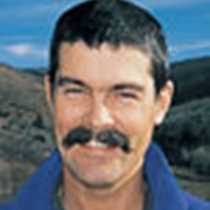Our weather was quite different than that experienced by the Corps of Discovery. The clouds of the past couple of days parted for us, and cleared away. The sun broke through and offered us a fine view of the little seaport town of Astoria, climbing its wooded headland along the south shore of the estuary.
Just after breakfast, we toured the Columbia River Maritime Museum in downtown Astoria - a fascinating museum full of ship's tales, nautical equipment, and ship models. Shortly after, we traveled up the Lewis and Clark River to the Fort Clatsop Memorial. The memorial includes one of the finest Lewis and Clark museums in the country, as well as a faithful reconstruction of the fort Lewis and Clark wintered in from December 1805 to March 1806.
Next, it was back to the ship for a fine lunch, then up to the famous Astoria Column, a slender spire that overlooks the estuary from a hill 600 feet above the water. We took in the cartographic vista of the estuary, Young's Bay, and the mountainous country to the north and south of us, then drove out to a Pacific beach. There, we ambled on the firm, damp sand, with great breakers washing in and sun on our faces. A light fog bathed Tillamook Head to the south, but we had a clear view north of Cape Disappointment and the mouth of the Columbia River. We also had time to walk to the wreck of the Peter Iredale, still regularly bashed by the waves that ran the 287-foot sailing vessel aground in ...
Back aboard the Sea Bird, we sailed west toward the infamous Columbia Bar, and, with cocktails in hand, felt the swells of the Pacific beneath our feet. Here, our westward voyage, like that of Lewis and Clark, came to an end. But before we bent our course eastward, we could all join Clark in saying:
"Great joy in camp we are in View of the Ocian, this great Pacific Octean which we been so long anxious to See. And the roreing or noise made by the waves brakeing on the rockey Shores (as I suppose) may be heard distictly."
---- William Clark, November 7, 1805




